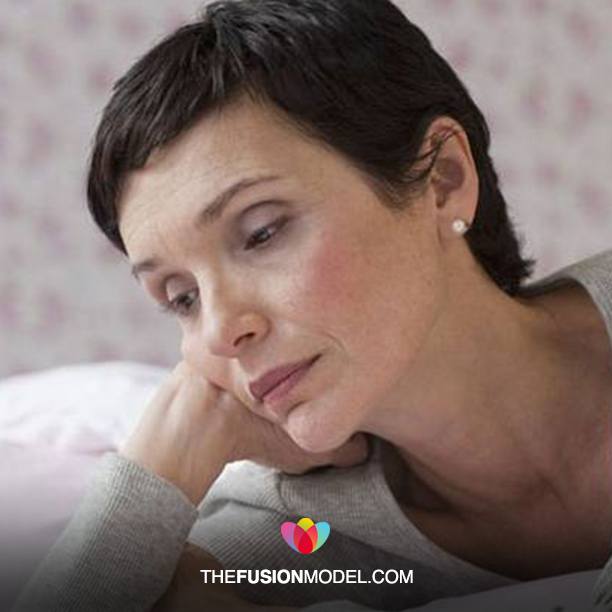What It Is
This mood disorder, which affects about five percent of American adults, is typified by feelings of sadness, anger or frustration. Unlike the occasional unhappy spell, the emotions persist for weeks or months and interfere with daily life. You may have trouble sleeping or concentrating, have outbursts of anger or avoid social situations.
Why It Happens
Depression can be triggered by stressful experiences and may accompany chronic illnesses or pain. Older people who are socially isolated are more likely to experience it. Women appear to be at higher risk than men. A genetic predisposition and levels of mood chemicals, such as serotonin, may also play roles.
What’s New
Physical Activity
There’s growing scientific evidence that exercise offers genuine therapeutic effects. In a review of 13 trials published in the Journal of Clinical Psychiatry in 2011, depressed patients participating in physical activities such as running, walking, biking and swimming saw more improvement in symptoms afterward than those in nonexercise groups. When depressed, you may find it hard to get motivated to go to the gym, so it’s a good idea to set small goals — a short stroll, a gentle yoga class — before working up to 30 to 40 minutes of activity daily.
SAM-e (And B Vitamins)
SAM-e (S-adenosyl-L-methionine), an increasingly popular OTC option, raises “brain levels of dopamine, norepinephrine and other neurotransmitters,” says Victoria Maizes, MD, executive director of the Arizona Center for Integrative Medicine. She notes that it’s most effective when taken with vitamin B12 (1 mg daily) and folate (800 mcg), low levels of which are seen in depressed people. The dosage of SAM-e starts at 400 mg a day and can go up to 1,600 mg. The supplement also has shown some success when used with antidepressants: In a 2010 study in the American Journal of Psychiatry, 36 percent of patients who augmented treatment with SAM-e reported improvement, compared with 18 percent who added a placebo. Patients should consult a doctor before combining the two.
Whole Foods (And Omega-3s)
The typical Western diet — heavy on processed meats and refined carbs — is associated with higher rates of depression, according to a 2010 study in the American Journal of Psychiatry, while diets rich in produce and whole grains are associated with lower odds, even after adjusting for factors such as socioeconomic status. Seafood may also offer protective benefits. “Societies where more fish is eaten have less depression,” says Maizes. For those taking fish oil capsules, she suggests a mix of two types of omega-3 fats: EPA (1,000 to 1,200 mg a day) and DHA (300 to 600 mg).
What’s Natural
St. John’s Wort
Close to 30 studies have found that this herb (Hypericum perforatum) works as well as standard antidepressants for mild to moderate depression, says Maizes. Because St. John’s wort can interfere with how the body metabolizes medication — including birth control pills and HIV medicines — she says it’s best for patients who don’t take other drugs. The recommended dose is 900 to 1,500 mg daily. Look for a standardized extract of 0.3 percent hypericin or 3 to 5 percent hyperforin, the herb’s active compounds.
Mindfulness Practices
Mindfulness therapies, including meditation and other exercises that focus awareness, may alter the function of key regions of the brain that process emotions and pain. A University of Michigan study found that depressed patients with heart disease who attended a four-day retreat involving meditation, guided imagery, drumming, journal writing and hiking saw immediate reductions in depressive symptoms, along with increased hopefulness — improvements that persisted at 3- and 6-month follow-ups. Those new to such practices may want to start by listening to a guided meditation or deep-breathing exercise on an iPod for a few minutes a day.
Light Therapy
Light boxes that mimic the sun’s rays have long been used to treat seasonal affective disorder, the type of depression brought on by winter. New research suggests that they may help with nonseasonal depression too. In a 2011 Dutch trial, patients who underwent 3 weeks of home-based therapy (one hour each morning) saw significant improvements in mood, compared with those who got a placebo of dim light. Researchers believe the light may activate a brain area that controls circadian rhythms and also boost melatonin (a hormone derived from serotonin and critical for healthy sleep-wake cycles); it may also regulate the stress hormone cortisol. Light boxes are available at drugstores ($100 to $300-plus). Look for one that provides 10,000 lux of light.
What’s Tried And True
Antidepressants
Almost 25 percent of middle-aged women take prescription antidepressants, many of which work by regulating brain chemicals such as serotonin (Zoloft), dopamine (Wellbutrin) and norepinephrine (Cymbalta). Antidepressants appear to be most effective in cases that are severe or long-lasting. In a review of 31 studies in the Lancet, 41 percent of patients taking a placebo relapsed, on average, compared with 18 percent who continued on antidepressants. “The growing consensus is that psychotherapy should be the first-line treatment for mild to moderate depression, while antidepressants should be reserved for people with more severe or chronic depression,” says Charles Bombardier, Ph.D., a clinical psychologist at the University of Washington School of Medicine.
Cognitive-Behavioral Therapy
A range of psychotherapy techniques can benefit depression, so it makes sense to shop around to find the best fit. Cognitive-behavioral therapy teaches patients how to stave off negative thoughts, become more aware of symptoms, and spot relationships, situations, or other factors that worsen depression. A recent pilot study by Brazilian researchers found that seven sessions of CBT not only reduced depressive symptoms in women but also decreased inflammation in the brain, which may play a role in the disorder. A 2012 evidence review at Boston University found that CBT may be more successful at treating depression and other mental health problems than many comparative treatments. (The American Psychological Association lists certified practitioners for a variety of psychotherapy techniques, including CBT.)
Mindfulness-Based Cognitive Therapy
Designed to head off depressive episodes before they start, mindfulness-based cognitive therapy is an eight-week group program that teaches participants techniques they can use to cope with negative emotions when they arise, instead of avoiding or struggling against them. “It works well for people with depression who have gotten well and are trying to prevent recurrence,” says Zindel Segal, Ph.D., a professor of psychiatry at the University of Toronto who created MBCT. “Our research shows that we can reduce the risk of relapse by 50 percent.”




